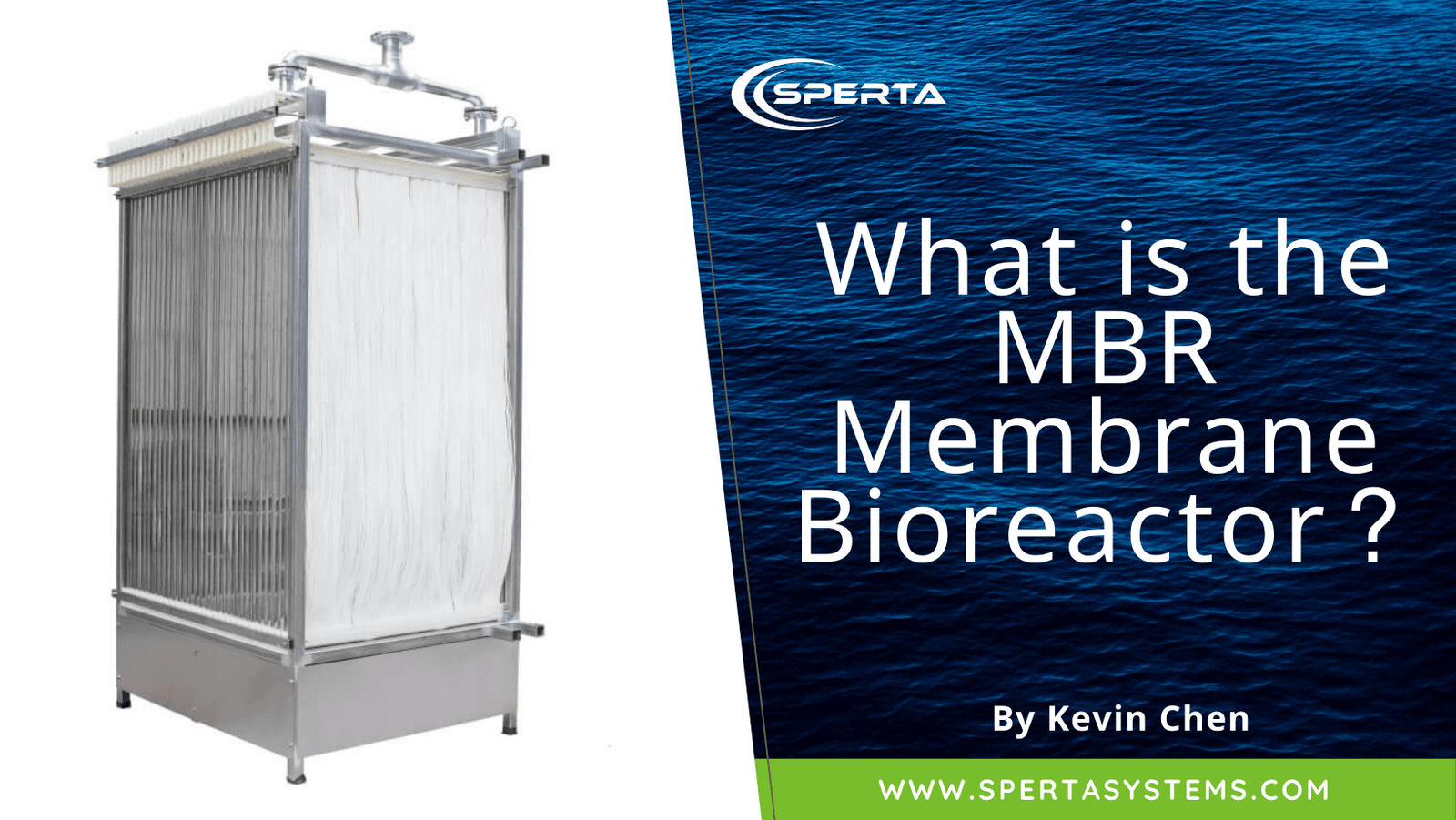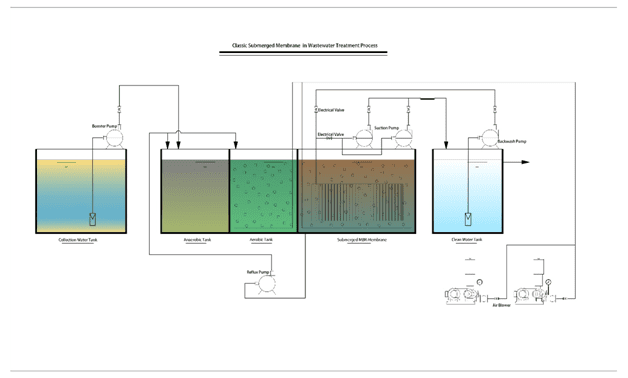Membrane Bioreactor vs. Traditional Treatment Methods: Key Differences Explained
Membrane Bioreactor vs. Traditional Treatment Methods: Key Differences Explained
Blog Article
How Membrane Layer Bioreactors Are Transforming Water Filtration Systems
The development of membrane bioreactors (MBRs) represents a considerable improvement in the area of water filtration, combining biological treatment procedures with innovative membrane layer filtering innovations. As worldwide water shortage increases, the duty of MBRs in promoting safe and clean water reuse and lasting water administration ends up being progressively vital.
Summary of Membrane Bioreactors
Membrane bioreactors (MBRs) stand for a substantial improvement in water purification innovation, as they combine organic therapy processes with membrane filtration. This assimilation boosts the effectiveness of wastewater treatment by making use of microbes to break down organic pollutants while all at once using semi-permeable membranes to different cured water from suspended solids and microorganisms.
The MBR system usually contains an organic reactor where the microbial population metabolizes impurities, followed by a membrane layer filtering unit that preserves biomass and enables just tidy water to pass through. This twin performance causes higher effluent quality contrasted to conventional therapy methods. MBRs can be run in both batch and constant flow settings, using flexibility in style and application.
They additionally make it possible for the recovery of water for reuse, therefore adding to water sustainability campaigns. On the whole, MBRs are at the forefront of improving water treatment effectiveness and top quality, showcasing the possibility for innovative solutions in environmental administration.
Advantages of MBR Innovation
The assimilation of organic therapy with membrane layer filtration offers various advantages for water purification processes. One of the primary benefits of Membrane Bioreactor (MBR) technology is its ability to efficiently eliminate both organic and inorganic impurities, bring about high-grade effluent. The membranes work as a physical obstacle, preventing put on hold solids and microorganisms from passing through, which enhances the overall safety and reliability of treated water.
In addition, MBR systems call for a smaller footprint contrasted to standard therapy techniques, enabling much more efficient space application. This portable style is especially beneficial in urban setups where land is restricted. MBRs also show operational flexibility, fitting differing influent qualities and circulation prices without considerable performance destruction.
Moreover, the process offers boosted nutrient removal capabilities, specifically for nitrogen and phosphorus, which are important for protecting against eutrophication in obtaining waters. The decreased sludge manufacturing related to MBR technology additionally equates to lower disposal expenses, making it an economical service in the lengthy run - Membrane Bioreactor. Generally, the advantages of MBR innovation position it as a leading option for lasting and ingenious water filtration systems, dealing with both ecological and economic concerns
Applications in Water Purification
Applications of Membrane Bioreactor (MBR) modern technology in water purification are impactful and diverse, attending to various therapy needs throughout numerous industries. MBRs properly combine biological therapy processes with membrane purification, making them perfect for metropolitan wastewater treatment, industrial effluent administration, and also potable water reuse efforts.
In municipal settings, MBRs are progressively utilized to improve the top quality of dealt with wastewater, permitting for compliance with stringent discharge policies and helping with the recycling of water for irrigation and non-potable uses. Their small style likewise makes them appropriate for metropolitan atmospheres where area is restricted.
Industrially, MBR innovation is used to deal with process water and wastewater, especially in industries such as food and beverage, pharmaceuticals, and textiles. By effectively removing contaminants and put on hold solids, MBRs aid sectors lessen ecological effects while recuperating important resources from wastewater streams.
Moreover, MBRs are obtaining grip in decentralized water therapy applications, where small-scale systems can be deployed in remote locations or creating regions. This adaptability enables areas to attain lasting water administration solutions, boosting accessibility to see it here clean water while decreasing reliance on typical therapy techniques.
Case Researches and Success Stories

In another instance, a textile manufacturing center in Bangladesh adopted MBR modern technology to resolve its wastewater challenges. The system minimized chemical oxygen demand (COD) degrees from 1,200 mg/L to less than 100 mg/L, hence meeting governing requirements and significantly lessening environmental effect.
The University of Cape Town's MBR installment has confirmed effective in treating greywater for non-potable reuse on school. This job not just saves potable water but also acts as an academic design for sustainable practices.
Moreover, a seafood processing plant in Norway utilized MBR innovation to deal with effluents including high degrees of raw material, accomplishing over 90% toxin removal. These study underscore MBR innovation's convenience and its vital function in improving water top quality across diverse applications.
Future of Water Treatment Solutions
As worldwide water deficiency and air pollution challenges heighten, cutting-edge water therapy solutions are becoming progressively vital to ensure sustainable access to clean water. The future of water treatment hinges on the combination of sophisticated modern technologies that boost the performance and performance of filtration procedures. Membrane layer bioreactors (MBRs) go to the center of this evolution, combining biological treatment with membrane filtration to produce top quality effluent appropriate for different applications.

Emerging patterns such as resource recovery from wastewater, including nutrients and power, will certainly additionally her latest blog transform therapy centers into environment-friendly hubs. Additionally, developments in nanotechnology and membrane products guarantee improved performance and long life of filtering systems.

Verdict
To conclude, membrane layer bioreactors stand for a significant innovation in water purification technologies, successfully combining organic treatment with innovative membrane purification. The various benefits, including boosted effluent high quality and lowered spatial demands, make MBRs specifically appropriate for city applications. Their role in safe and clean water reuse and sustainable see here water administration highlights their importance in attending to global water shortage obstacles. Continued research study and development will better enhance the effectiveness and adoption of MBR modern technology, guaranteeing a durable future for water therapy services.
The emergence of membrane bioreactors (MBRs) stands for a substantial advancement in the field of water purification, merging biological treatment processes with innovative membrane layer purification modern technologies. As global water scarcity increases, the duty of MBRs in promoting safe and clean water reuse and lasting water monitoring comes to be significantly critical. They also enable the recovery of water for reuse, thus contributing to water sustainability initiatives.As global water scarcity and pollution challenges magnify, innovative water treatment services are coming to be progressively necessary to make sure sustainable access to clean water. Their duty in drinkable water reuse and sustainable water management highlights their importance in resolving international water shortage difficulties.
Report this page